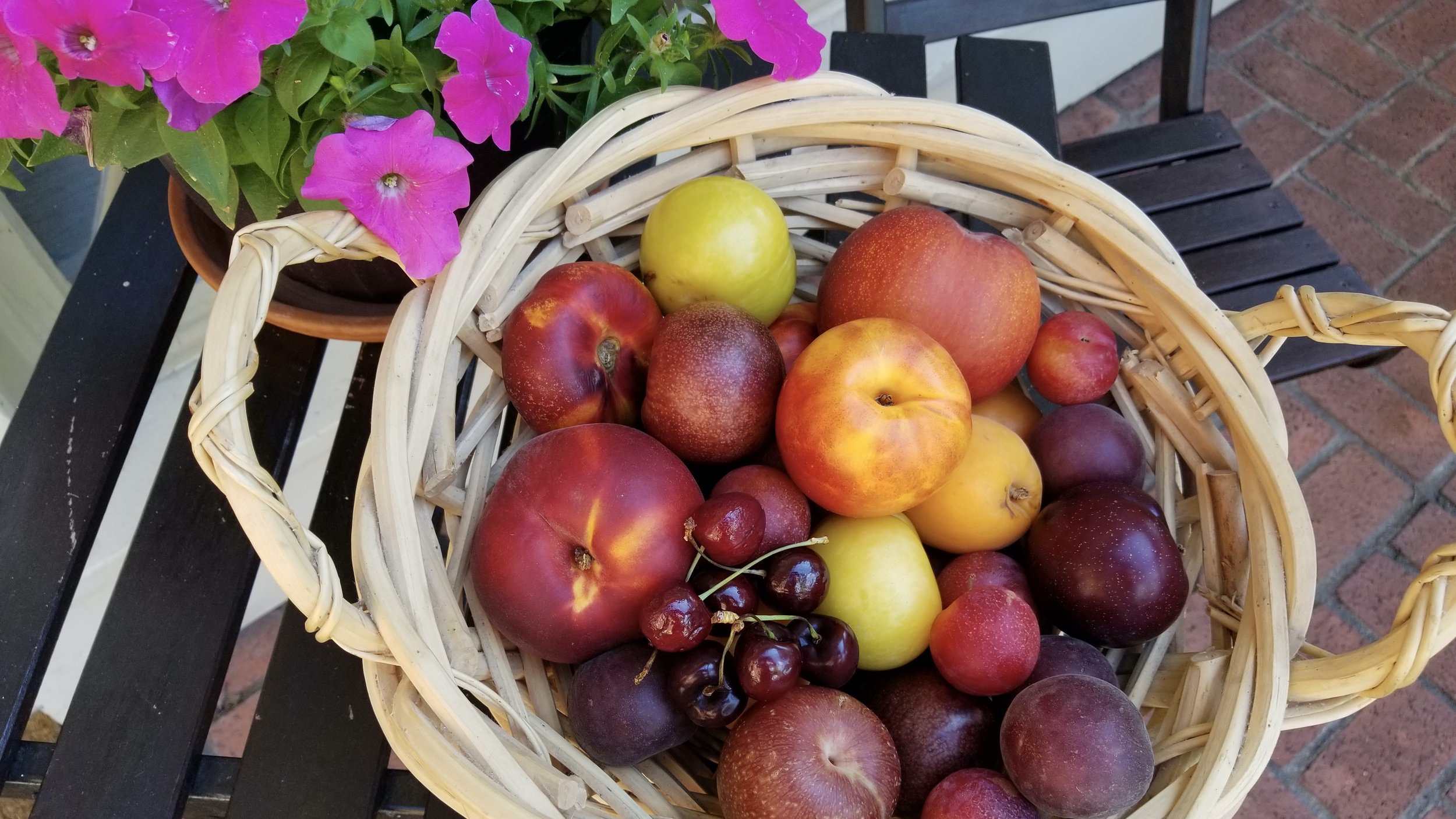MACERATING FRUIT
See the recipe for Summer Stone Fruit Salad after the story below.
Don’t just toss a bunch of chopped fruit together, then add sugar, without reading this story.
Knowing the difference between the two big “families” of fruits will help appropriately juice up your summer fruit salads. The two families of fruits ripen—or, more simply, sweeten—differently.
Climacteric Family
What are called “climacteric” fruits can ripen—that is, gain flavor and get sweeter—even when separated from their parent plant; they contain enough starch inside themselves to change over time into sugar. Examples are apples, tomatoes, bananas, pears, cantaloupe melons, plums and peaches. (For this reason, climacteric fruits often are picked and shipped when under-ripe because they’re not easily damaged in transit.)
Non-climacteric Family
“Non-climacteric” fruits must obtain all their sugar from the parent plant and consequently ought to be bought only when fully ripe. Examples include most berries and citrus fruits, cherries, grapes, most melons, pineapples and the pomegranate.
The cooking process of “maceration” (from a Latin word that means “to soften”) draws out moisture from fruit through the addition of sugar to cut fruit. If fruits are non-climacteric (and not picked under-ripe), they’re already pretty juicy. Preparing them with sugar—in, say, a fruit salad—might result in an excessive amount of juice in only a few minutes. That may or may not be desired by you or those whom you serve, but it’s important to keep in mind.
Side note: in recipes for fools, cobblers or crumbles, be watchful for excessive juice from the commonly called-for addition of sugar. All that juice can spoil any crunch in a crust.
Macerating unripe climacteric fruit in sugar, however, isn’t a substitute for ripening them. Their ripening merely takes time in your kitchen counter’s fruit basket.
It’s a good idea, then, to compose summer fruit salads from ripe fruits from within one family only, or to be careful, when mixing fruits from the two families, for excessive moisture in the finished salad.
RECIPE: Summer stone fruit salad
Kim Laidlaw, chowhound.com
Ingredients
1/4 cup sugar
1/2 vanilla bean, halved lengthwise and seeds scraped out
3 ripe nectarines or peeled peaches, pitted and cut into 1/4-inch slices
6 ripe apricots, pitted and cut into 1/4-inch slices
6 ripe plums, pitted and cut into 1/4-inch slices
1 cup pitted, halved cherries
2 tablespoons finely chopped pistachios
Directions
In a small saucepan over medium heat, stir together the sugar, 1/3 cup water, and lemon juice. Add the vanilla bean pod and seeds. Bring to a boil to dissolve the sugar, and then reduce the heat to low and simmer until the mixture becomes syrupy, about 5 minutes.
Set aside to cool to room temperature, then refrigerate until chilled. In a large serving bowl, toss together the fruit. Remove the vanilla bean from the chilled syrup and drizzle the fruit with the syrup. Toss gently, garnish with the pistachios, and serve.

